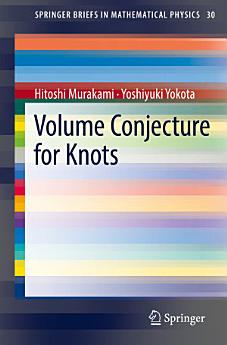Volume Conjecture for Knots
Über dieses E-Book
In this book we start with the definition of the colored Jones polynomial by using braid presentations of knots. Then we state the volume conjecture and give a very elementary proof of the conjecture for the figure-eight knot following T. Ekholm. We then give a rough idea of the “proof”, that is, we show why we think the conjecture is true at least in the case of hyperbolic knots by showing how the summation formula for the colored Jones polynomial “looks like” the hyperbolicity equations of the knot complement.
We also describe a generalization of the volume conjecture that corresponds to a deformation of the complete hyperbolic structure of a knot complement. This generalization would relate the colored Jones polynomial of a knot to the volume and the Chern–Simons invariant of a certain representation of the fundamental group of the knot complement to the Lie group SL(2;C).
We finish by mentioning further generalizations of the volume conjecture.







